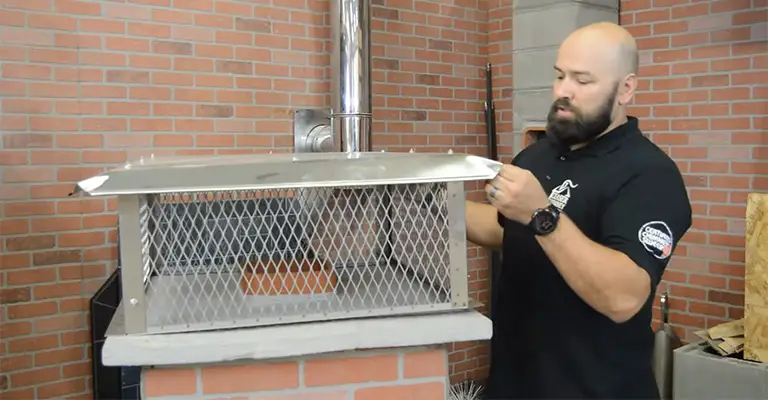Chimneys serve as crucial components of our homes, providing ventilation and a means to expel smoke and harmful gases from fireplaces and heating systems.
However, chimneys can also become entry points for unwanted debris, animals, and rainwater without proper protection. That’s where chimney caps come into play, serving as a protective barrier atop the chimney structure.
Chimney caps shield against potential hazards and offer additional benefits such as improved airflow and increased energy efficiency.
Whether you are looking for enhanced safety, reduced maintenance, or improved chimney performance, understanding the different types of chimney caps will be instrumental in ensuring a well-protected and efficient chimney system.
So, let’s dive into the world of chimney caps and discover the options that best suit your needs.
Different Types Of Chimney Caps
In general, chimney caps come in the following types:
7. Custom Chimney Crown
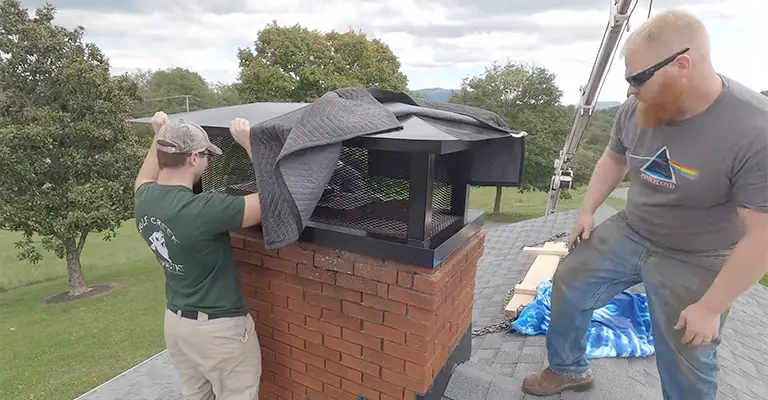
A chimney cap may be needed if the type of flue is complicated; it could require a custom-made chimney cap.
Doing this will ensure that your house has the right chimney cap for its shape and size. In comparison with other chimney caps, this cap is more expensive.
Depending on the size and shape of your flue, chimney caps may have a variety of attachments and features to ensure they fit correctly and work as advertised.
6. Standard Chimney Crown
Chimney caps with standard designs are the most common. In addition to laying flush with the tile, they are screwed to the chimney flue.
Caps are typically fastened to the chimney’s interior when the flue is lower to prevent things from getting inside. The standard caps include screens for animal protection and to catch sparks flying from the fire.
It provides an advantage in windy conditions by increasing updraft.
5. Integral Damper Mechanisms
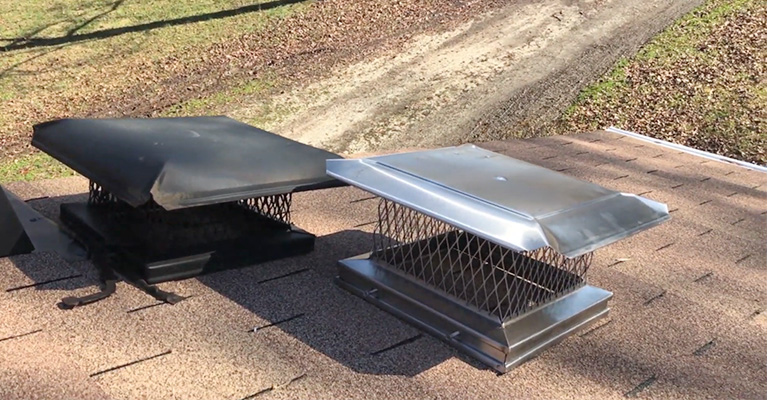
An integrated damper cap or mechanism is available for older fireplaces without dampers inside. It is important to install dampers to prevent cold air from blowing into the fireplace from outside.
Typically, a cable is routed inside the chimney to a lever mounted on the wall of the fireplace, which is attached to the damper mechanism. An old chimney cap works well with older chimneys, unlike those commonly found in newer houses.
4. Electric Draft Chimney Crown
A fan that can be adjusted to several settings helps create a good draft for the fire, making this one of the most innovative chimney caps or crowns.
An electric fan is mounted on the cap with different speed settings. Owners can adjust the draft control as needed, depending on the weather and the fire risk.
Despite being ideal for people who struggle to get a decent draft, it is also one of the most expensive chimney caps.
3. Band-Around Brick Chimney Crown
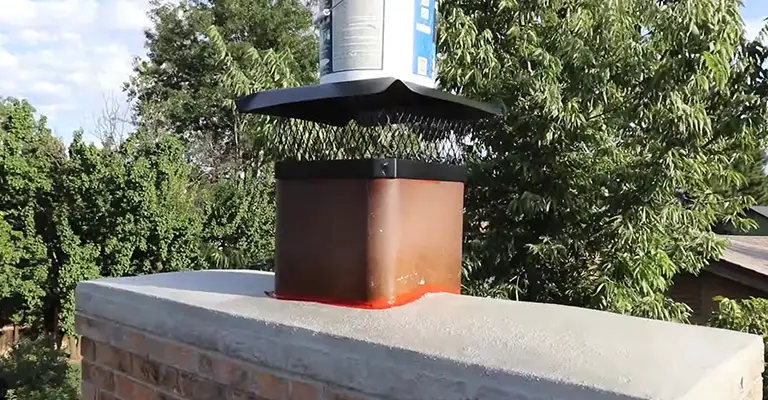
For outdoor chimneys, band-around brick chimney caps are best. It completely encloses the chimney and tightly covers the brick’s exterior.
The most common material used in their construction is stainless steel or aluminum.
The chimney cap consists of an adjustable band that wraps around the chimney and a metal mesh skirt (that fits tightly around each corner of the chimney).
This type of chimney cap is suitable for masonry chimneys. A professional must install band-around caps to ensure a proper fit.
2. Top Mount Chimney Crown
Known also as multi-flue chimney caps, top mount chimney caps are available in copper or stainless steel, with two lid options, two diameter options, and four screen height options.
The top-mount cap is best suited for chimneys with flues extending past the crown; therefore, keep this in mind when choosing. The bricks can be used for masonry chimneys or prefabricated chimneys.
1. Weather Shield Chimney Crown
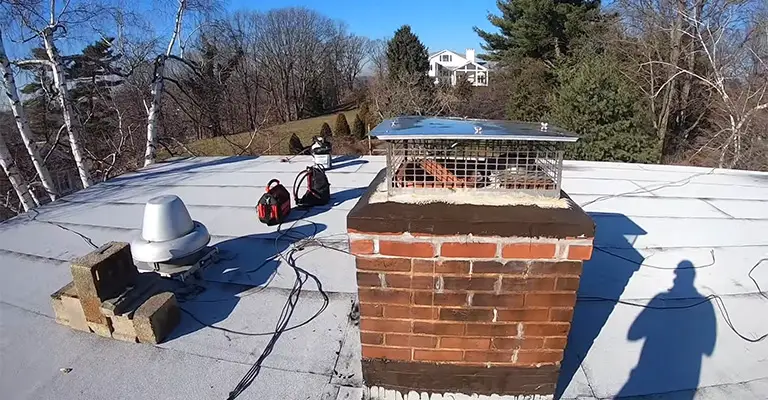
The wind, storm, hurricane, or wind-resistant chimney cap is often used in residential construction.
Several types of weather shield chimney caps are available, such as galvanized metal, aluminium, and stainless steel. These can be used, for instance, in areas with strong winds and colder temperatures.
Compared to other materials, these are very corrosion-resistant and have the ability to withstand almost any weather condition. Prefabricated and masonry chimneys can benefit from weather-shielded caps.
Among their benefits are that they can keep animals and pests from entering the chimney, as well as block precipitation and falling leaves (via a mesh screen). Installing them is very straightforward, and they help reduce the impact of downdrafts.
What Are The Benefits Of Chimney Caps?
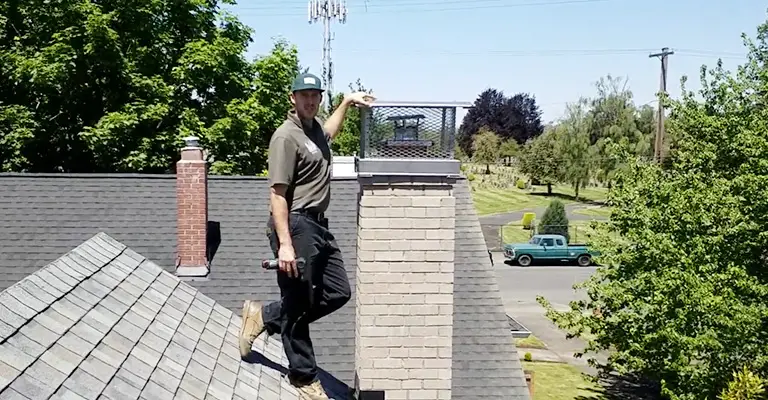
The chimney cap can shield your chimney from destructive weather conditions such as rainwater (which can damage the lining, saturate your mortar joints, and produce mold) and wind (which causes downdrafts that blow smoke back into your house).
Using chimney caps does more than just protect your chimney against the elements; they also keep critters out of your chimney flue.
In case a bird or animal becomes stuck in your chimney, the body’s decomposition can promote maggots, flies, and an unpleasant stench.
Additionally, chimney caps can act as a barrier to prevent lit embers from landing on your roof and starting a fire. In addition, chimney caps prevent leaves, branches, twigs, and other natural debris from blocking your flue.
What Are Chimney Caps Made Of?
While chimney caps are similar in function and basic design, their materials may vary.
Galvanized Steel
Although galvanized steel is the least expensive material for chimney caps, it is also the least durable. Compared to stainless steel, galvanized steel will last approximately five years.
Aluminum
Aluminum chimney caps are affordable and corrosion-resistant, but they are less strong and durable than other chimney caps.
A lightweight material like aluminium has the tendency to bend and break in high winds or poor weather because of its lightweight.
Copper
Besides being extremely durable, copper chimney caps also have a classic, stylish appearance. These products’ stability, durability, and resistance to corrosion make them a wise investment.
Maintaining copper caps more regularly is necessary to prevent them from turning green or dulling.
Stainless Steel
It is widely accepted that stainless steel chimney caps provide the best balance of cost and performance. Stainless steel caps are more expensive than aluminum or galvanized steel, but they are more durable and require fewer maintenance efforts.
Final Words
Despite its small size and affordability, the chimney cap offers many benefits in terms of saving time, money, and stress in the future. Chimney caps act as protective safety mechanisms that enclose your chimney flue with metal mesh covers.
It minimizes the need for frequent chimney cleaning, repair, and potential hazards by keeping debris and animals out of the chimney.
Adding a chimney cap makes your heating system more efficient by preventing drafts and airflow through it, which can reduce your energy costs.
Thus, investing in a chimney cap can provide long-term benefits, including peace of mind and ensuring the safety of your chimney.

